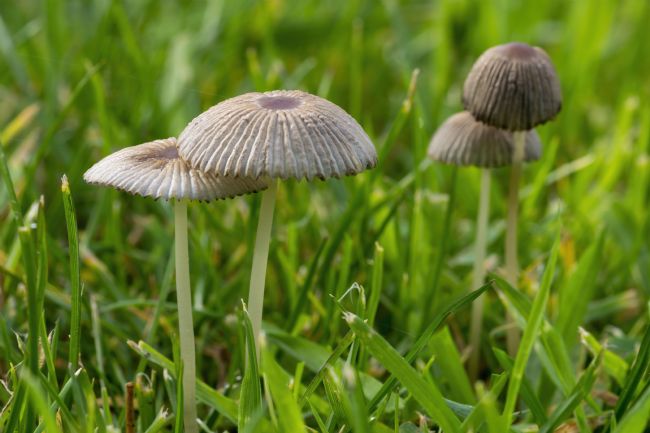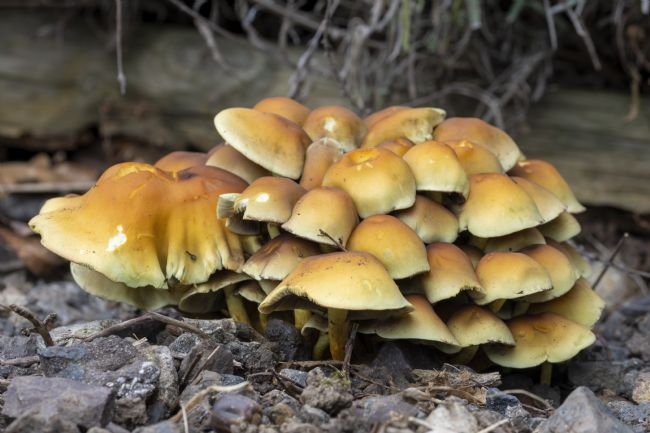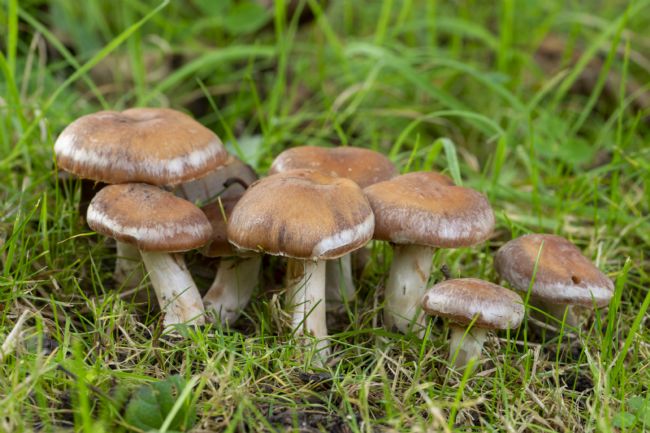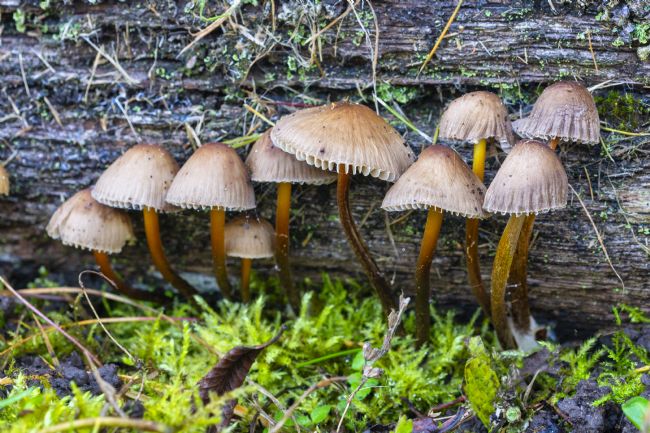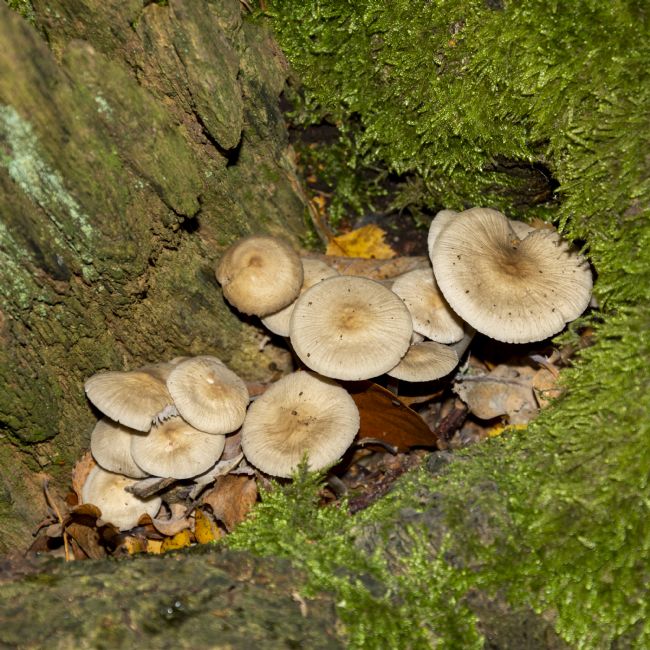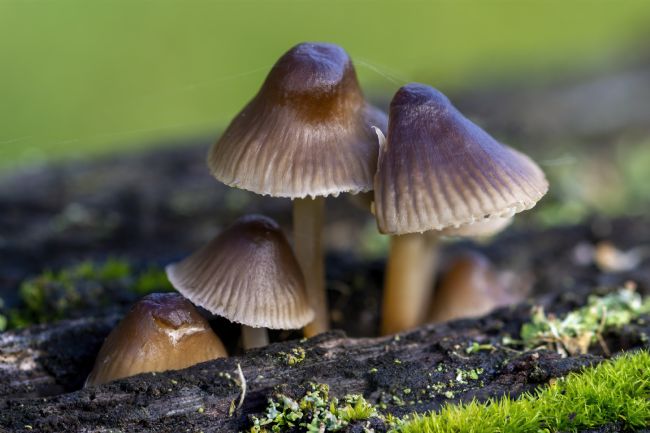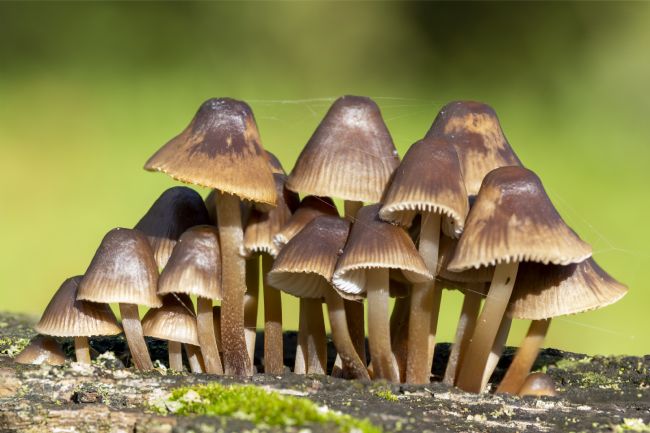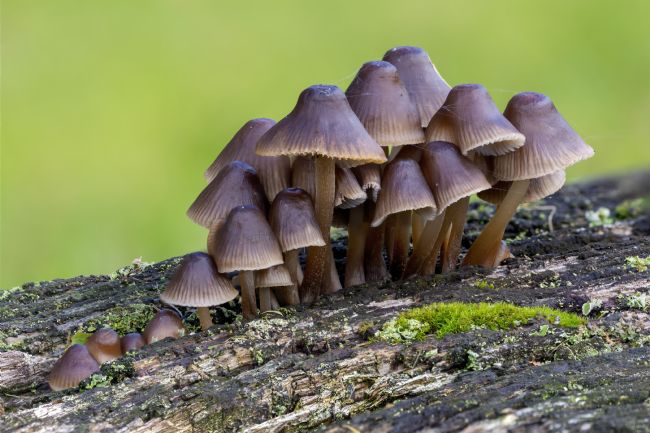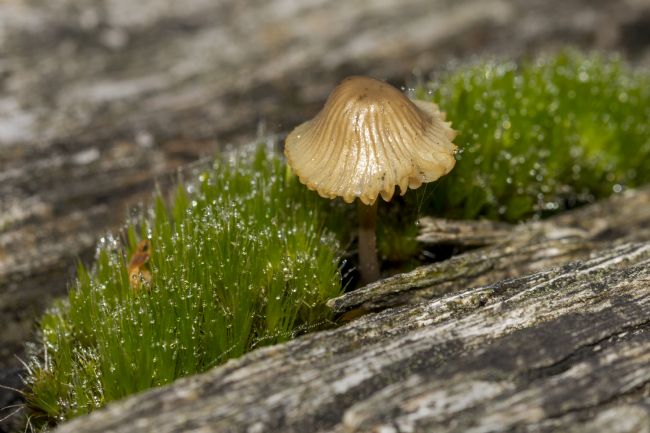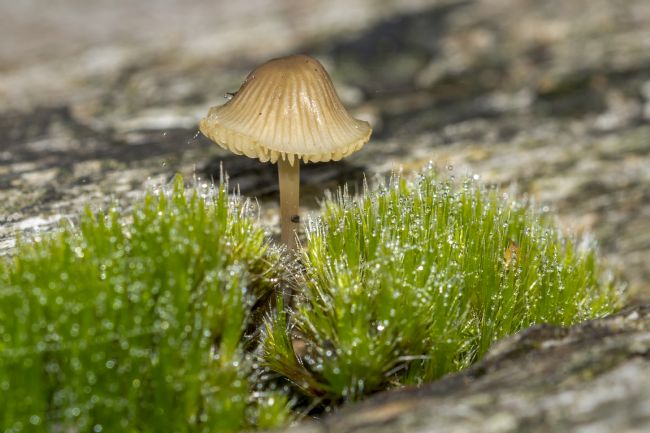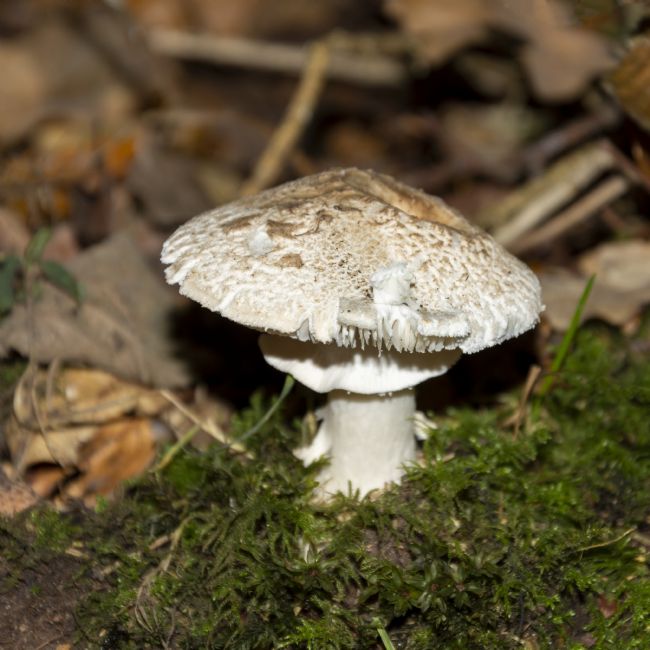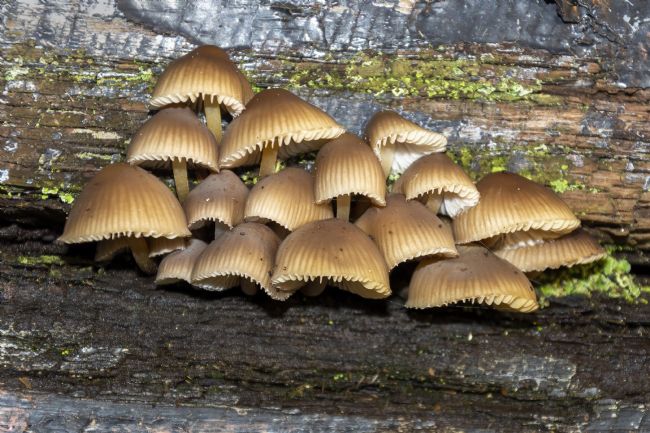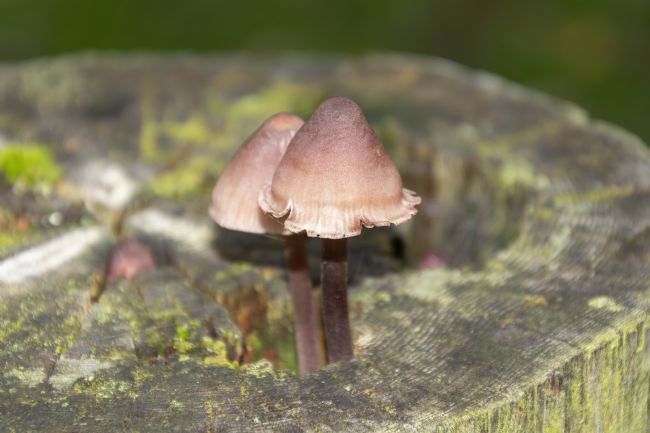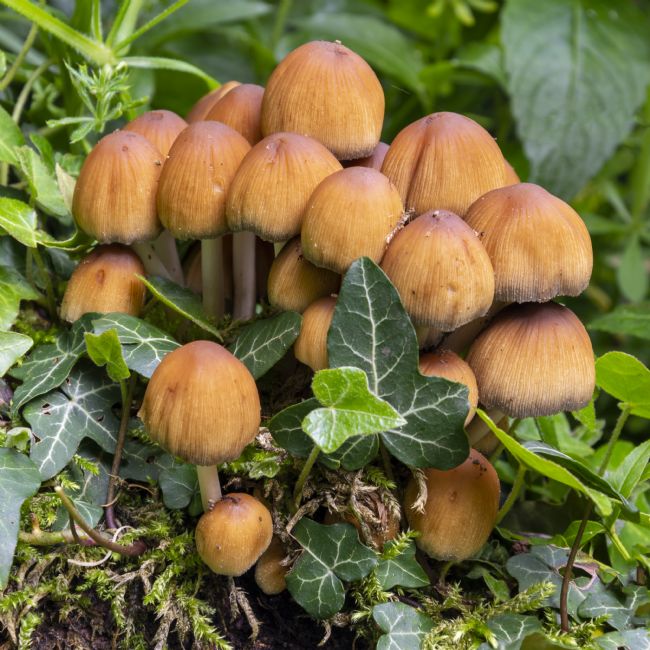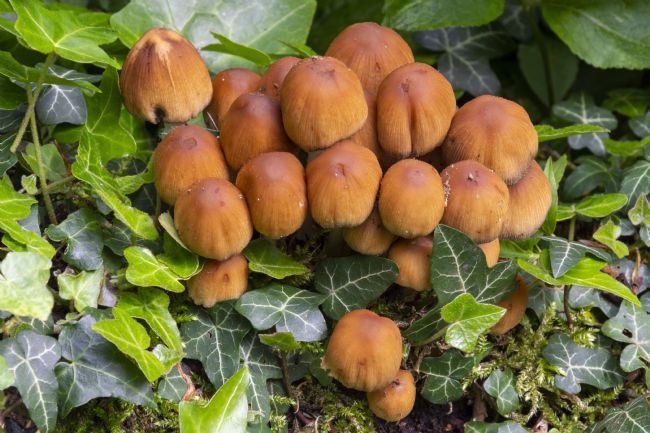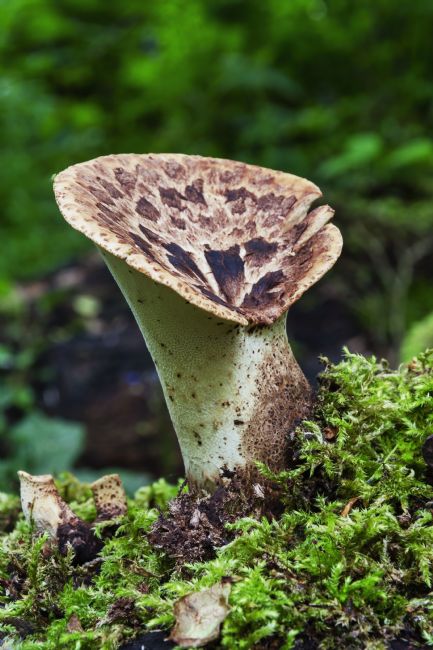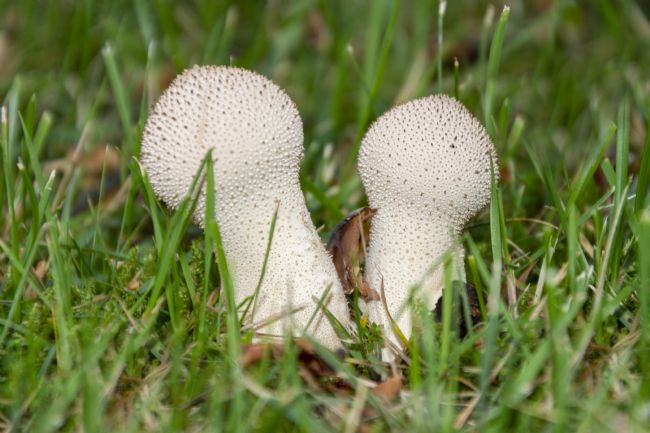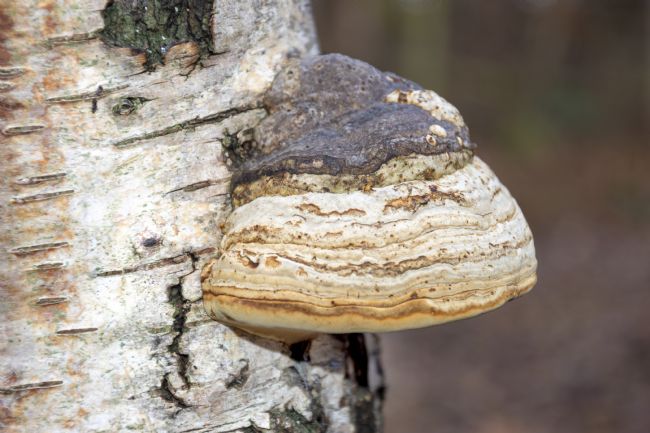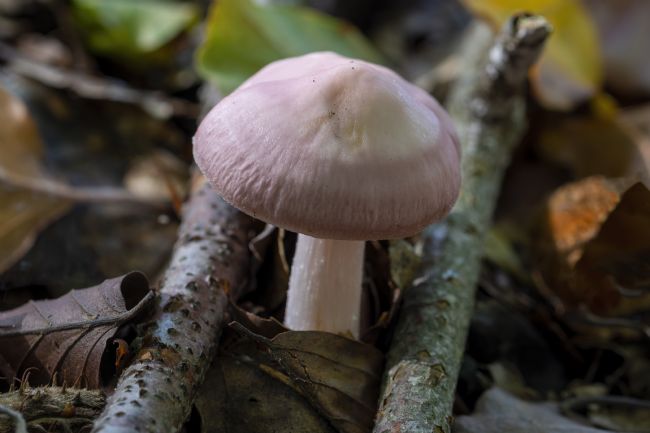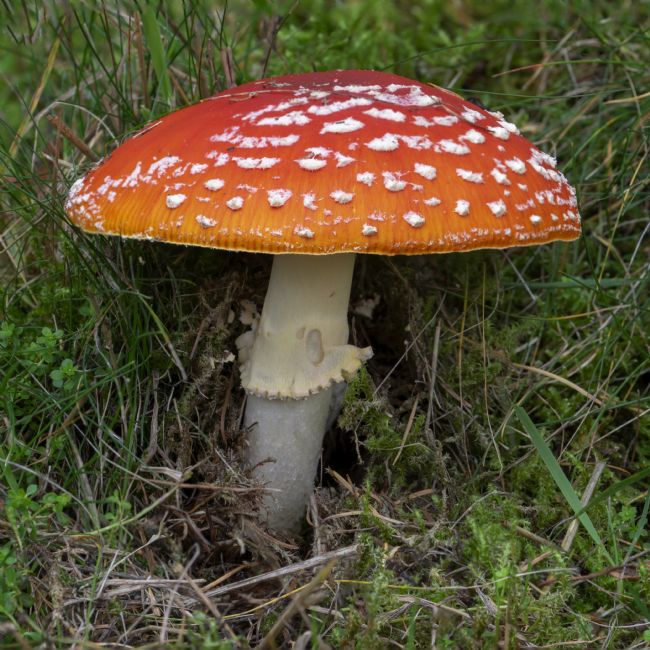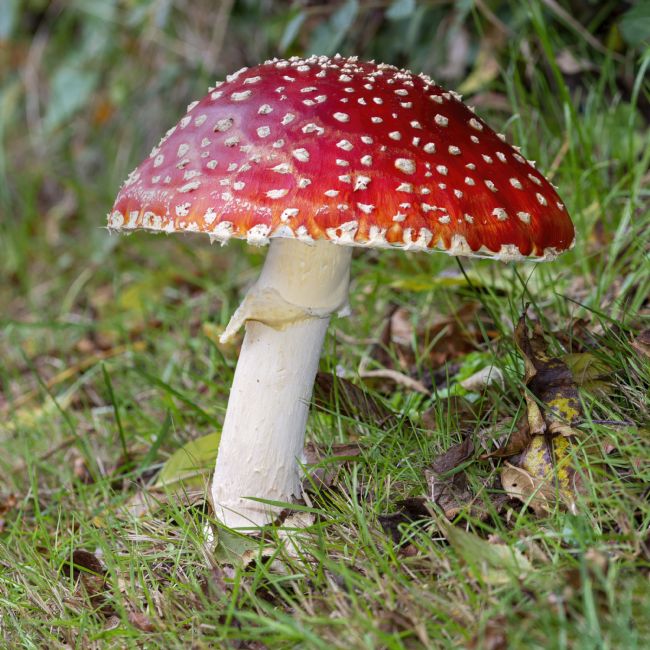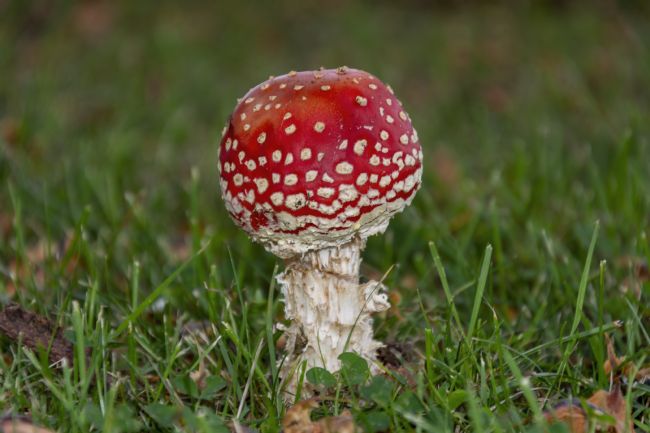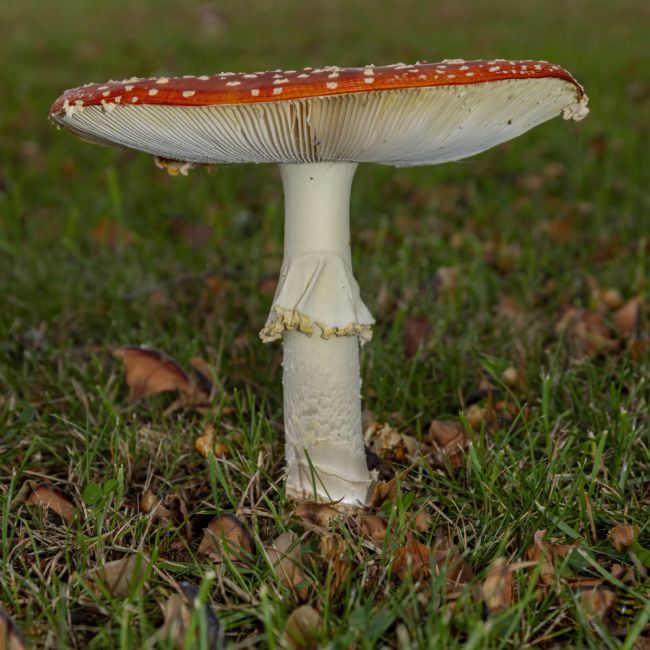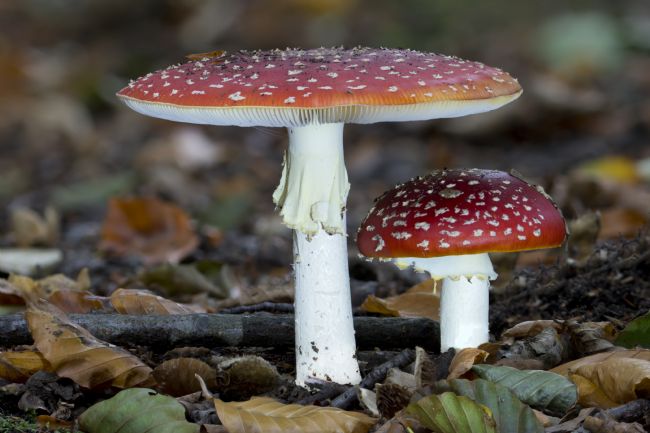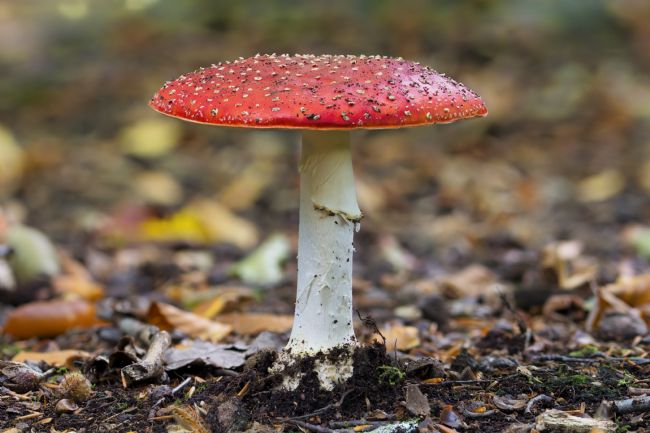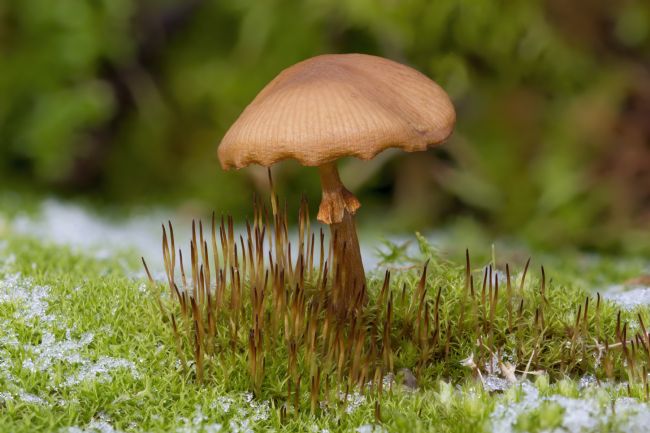Looking very similar to the Pleated Inkcap this small, fragile looking fungi can often be found amongst mulched areas where it grows either alone or in small clusters. I am not a fungi expert so please make your own mind up.
The sulphur Tuft - Hypholoma fasciculare is a common fungi that grows in tight clusters hence one of its common names - clustered woodlover. It is poisonous and if eaten (despite its bitter taste) symptoms include convulsions, temporary paralysis and distorted vision. Please note I am no expert and do not promise my ID of this is correct.
I believe this to be Meadow Waxcap - Hygrocybe pratensis however I am no fungi expert. It is a common fungi found in groups on grassland.
A small cluster of what I believe to be members of the common bonnet fungi family.
I believe this to be Pearly parachute (Marasmius wynneae) a small and slender fungi found on the base of a tree where several branches meet creating a little world for it to live in.
A cluster of autumn fungi, I think Burgundydrop Bonnet - Mycenae haematopus but I'm no expert.
A cluster of autumn fungi, I think Burgundydrop Bonnet - Mycenae haematopus but I'm no expert.
A cluster of autumn fungi, I think Burgundydrop Bonnet - Mycenae haematopus but I'm no expert.
A lonely specimen of what I believe to be a member of the common bonnet fungi family.
A lonely specimen of what I believe to be a member of the common bonnet fungi family.
I believe this to be a Shaggy parasol (Chlorophyllum rhacodes). It is sitting amongst moss on a fallen tree branch.
A small cluster of what I believe to be members of the common bonnet fungi family.
A couple of members of the parasol family of fungi have made their home on top of an old repurposed telegraph pole.
I believe this to be Glistening inkcap - Coprinellus micaceus - is a common fungi typically found on fallen and decaying wood.
I believe this to be Glistening inkcap - Coprinellus micaceus - is a common fungi typically found on fallen and decaying wood.
I believe this to be Tuberous Polypore - Polyporus tuneraster, found on a fallen tree stump.
The common puffball - Lycoperdon perlatum is a widely found and edible fungi that is best eaten when young. As it develops a hole appears at the top and by this time it is full of spores.
The Hoof Fungus (Fomes fomentarius) is an easy to identify fungus with a liking for Birch trees. Not regarded as being edible it has a long history of being used as tinder to aid fire lighting.
The rosy bonnet, Mycena rosea is a fine example of why you don't go picking and eating fungi you are not sure about. It may well be very cute and pink but in sufficient quantities it is deadly to humans if eaten.
A beautiful specimen of a fly agaric - Amanita muscaria. Commonly described as poisonous though there are few documented human deaths from its consumption, and after having been parboiled it is eaten as a food in parts of Europe, Asia, and North America. It has a history of being used for a hallucinogenic experience.
One of the most recognisable fungi, the Fly Agaric - Amanita muscaria are often seen having been eaten by any number of wild animals yet this one - a good 4 inches across is the most perfect one I have ever seen..
The Fly Agaric - Amanita muscaria is often cited as being poisonous and whilst I am not recommending anyone tries it there is a long history of it being used as a hallucinogenic. Despite having this effect on humans many animals seem to eat it with little to no known effect other than curing hunger.
The Fly Agaric - Amanita muscaria is often cited as being poisonous and whilst I am not recommending anyone tries it there is a long history of it being used as a hallucinogenic. Despite having this effect on humans many animals seem to eat it with little to no known effect other than curing hunger.
A Fly Agaric family - Amanita muscaria is a relatively common fungi famous for being poisonous when in reality it is more likely to lead stomach upset and hallucinations. Best I can say is if you aren't sure then leave it alone.
A single Fly Agaric - Amanita muscaria is a relatively common fungi famous for being poisonous when in reality it is more likely to lead stomach upset and hallucinations. Best I can say is if you aren't sure then leave it alone.
The very appropriately named Stinkhorn - Phallus impudicus gives off a pretty foul aroma that flies are seemingly unable to resist and once there their feet get a liberal coating of the spore bearing slime.
This little fungi group was found in one of my garden planters. Ice crystals remain after a week of sub zero temperatures. This image is also suitable for a square crop.
